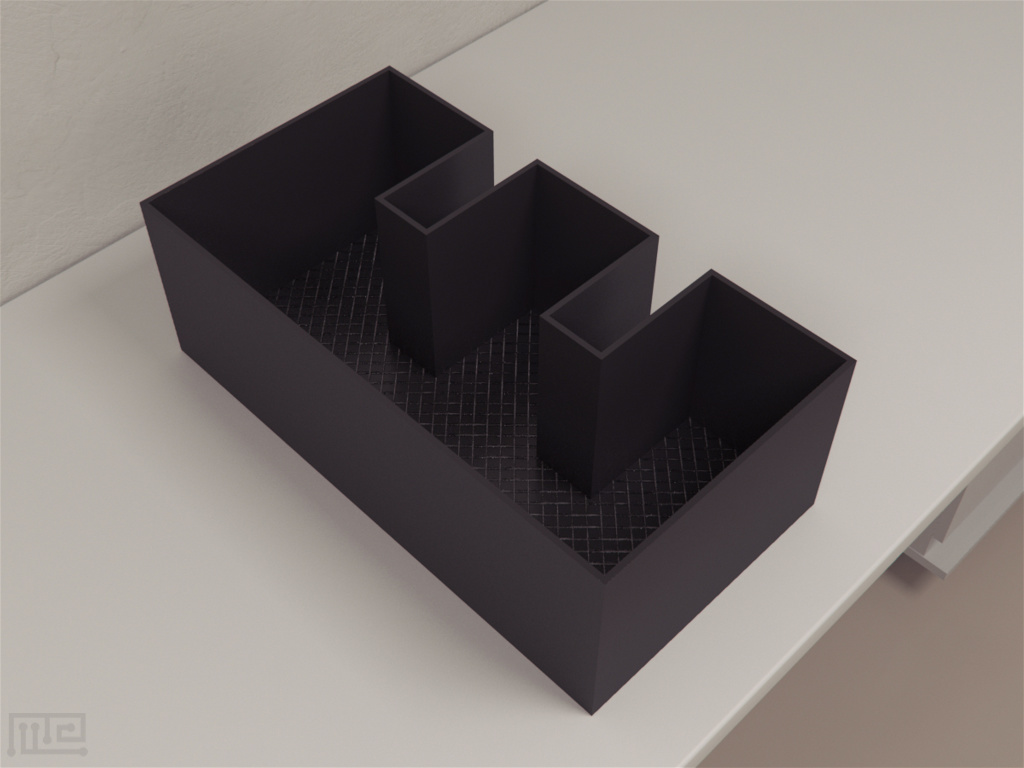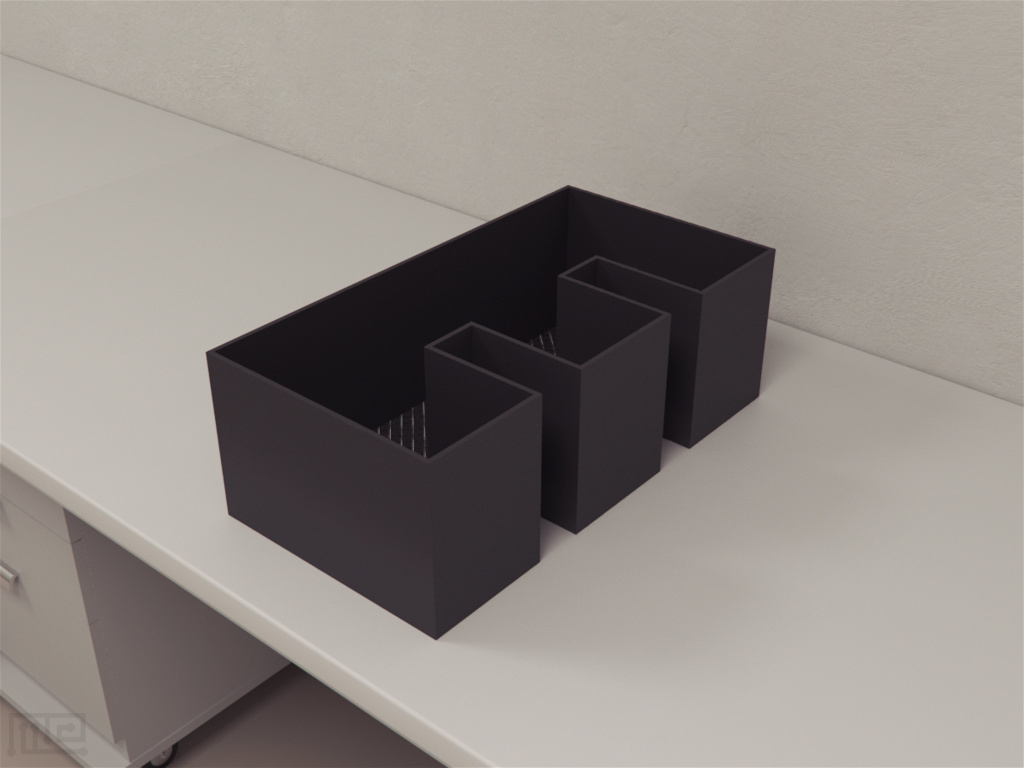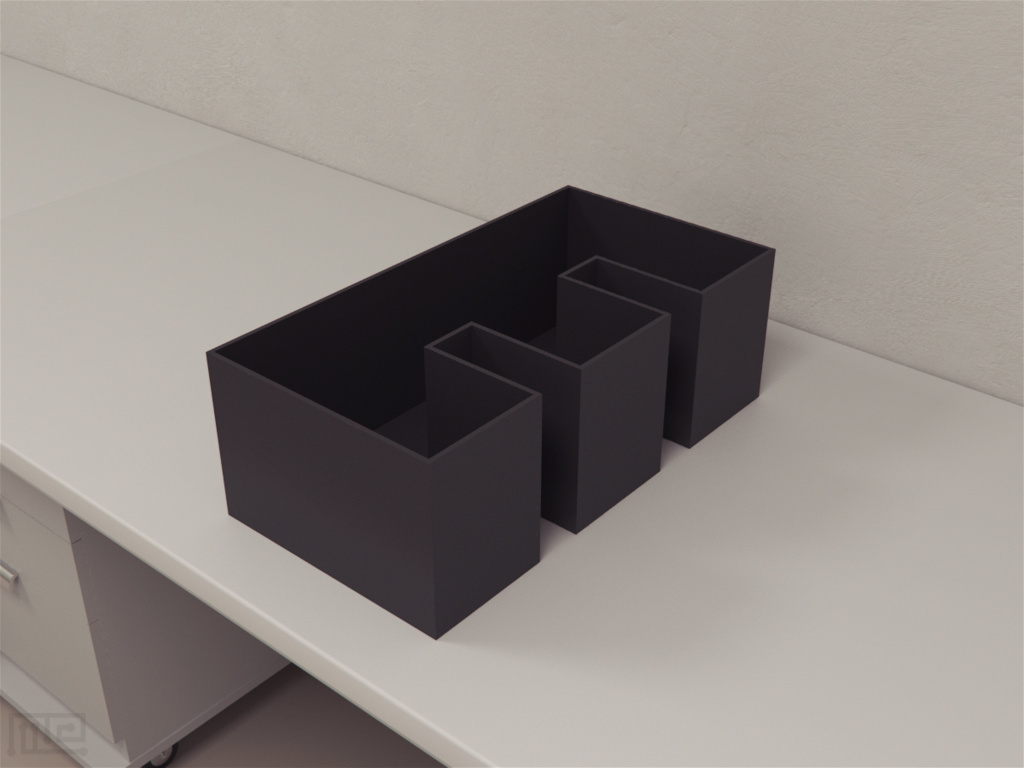The E- Maze is used to assess episodic memory in rodents. Episodic memory refers to recollecting an event consciously. It involves recalling what happened, where it happened and when it happened. For the most accurate recollection of episodic memory, language is an absolute necessity, precisely why analyzing episodic memory in the lab is an extremely tough ordeal.
The E maze is available with both clear and black inserts for replication of the sentinal paper or in multiple colors for variant use. Sizing in mouse, rat and custom sizing available upon request
Price & Dimensions
Mouse
$ 1290
One maze- Length: 40cm
- Width: 25cm
- Height: 14cm
- Arm width: 10cm
- Arm length: 14cm
Rat
$ 1390
One maze- Length: 60cm
- Width: 37cm
- Height: 21cm
- Arm width: 15cm
- Arm length: 21cm
Eacott, M. J. (2005). Recollection in an episodic-like memory task in the rat. Learning & Memory, 12(3), 221–223. doi:10.1101/lm.92505
Documentation
Introduction
The E- Maze is used to assess episodic memory in rodents. Episodic memory refers to recollecting an event consciously. It involves recalling what happened, where it happened and when it happened. For the most accurate recollection of episodic memory, language is an absolute necessity, precisely why analyzing episodic memory in the lab is an extremely tough ordeal.
Recent research has promulgated that the definition of episodic memory should be broadened beyond the bounds of what-where-when (Eacott & Norman, 2004). When humans recall past events, they use different contextual cues to differentiate one event from another. Hence, the what-where-when theory can be restructured as a what-where-which theory. The E-maze can be effectively applied to analyze the what-where-which spectrum of episodic memories.
Episodic memory is extremely susceptible to disruption due to aging and diseases affecting the hippocampal system. Failure to infer E-maze rules can help evaluate and probe deeper into diseases linked to memory loss like amnesia. The E-maze can help evaluate the neural basis for diseases that cause memory loss.
The E-maze is an open field apparatus. It is shaped like an ‘E’ and has three arms of equal dimensions attached perpendicularly to an alleyway. The middle arm houses the start box. The other two arms serve as the testing chambers. Other apparatus that can be used to assess memory are T-maze and the Y-maze.
Apparatus & Equipment
The E-maze is shaped like a capital ‘E’ and is constructed using acrylic. It has three arms each of which is 15 cm wide and 21 cm long. The walls of the maze are 21 cm high. The entire E-maze is 60 cm long and 37 cm wide. The three arms are attached perpendicularly to an alleyway. To provide animals with different visual and tactile contexts, the inside of the E-maze is black and smooth, or it is gray and covered in wire mesh.
Training Protocol
Clean the apparatus before initiating the trials with a 70% ethanol solution to eliminate traces of any lingering stimuli. Use overhanging light to illuminate the E-maze and prevent shadows. Tracking and monitoring of animals can be done using a tracking system such as the Noldus EthoVision XT.
Use objects that are unique to each trial. No object should be used more than once on any given day. Using trial-unique objects eliminates the possibility of discrepancies that could arise if the test animal is familiar with the object beforehand.
Habituation and Pretraining
The pretraining procedures can be performed in 4 phases as follows:
Phase 1
Place the subjects in the E-maze and allow it to acclimate to the apparatus for 30 minutes. Perform at least two familiarization sessions for each E-maze context.
Phase 2
Use one context and place two objects on two ends of the backbone of the E-maze. Place the animal inside the E-maze for 5 minutes to explore the objects and the E-maze. Remove the animal and place it in a holding cage. After 5 minutes place the test subject again in the E-maze and allow it to explore the unchanged maze again. Repeat this step with the other context so that the animal knows that in a particular day the location of the object will remain stable for each context.
Phase 3
Choose one context, place two objects on the distal ends of the two testing chambers so that they are not visible to the animal from the middle arm. Place the animal in the E-maze for 3 minutes and then transfer the animal to the holding cage for the next 3 minutes. Change the context of the maze and place the objects in the opposite arms. Place the test subject again in the E-maze for 3 minutes and let it explore it. Lastly, remove the test subject from the E-maze and place it in the cage for 3 minutes, during which change the context to the original one and place the objects accordingly. Place the test subjects in the E-maze with the original context for the 3 minutes. This way the animals will learn that the position of the objects will remain constant in a certain context on any particular day no matter how many events take place.
Phase 4
For each test subject run 8 trials similar to the ones mentioned before. But this time, hold the animals in the holding cage for 8 minutes as opposed to 3 minutes between each exposure. During these 8 minutes give the animals a copy of one of the objects present in the E-maze so that they can become habituated to that object.
E-Maze Task
Set-up the E-maze using one of the two available contexts (black and smooth or gray and covered in wire mesh). Place the objects on the far end of the two testing arms, out of sight of the animal. Place the animal in the center arm. Run 16 trials per animal with each context. Record the number of incorrect or correct turns that the animal makes.
Evaluation of episodic-like memory in rats
Eacott, Easton, and Zinkivskay (2005) evaluated the ability of rats to recollect episodic memory in the E- maze. They experimented using 16 dark Agouti rats and observed that the rats exhibited an overwhelming preference for non-habituated objects. Subjects were able to recollect what the object was, where it was placed and which context the location was dependent upon. The rats did choose the non-habituated object a greater number of times than the habituated object. However, the mean percentage of times that the rats chose the non-habituated object was still considerably lower than expected.
Effects of lesions of the fornix on learning and recollection in rats
Easton, Eacott, and Zinkivskay (2009) observed the effects of lesions of the fornix on recollection and memory in 16 Dark Agouti rats using the E-maze. Subjects were divided into two treatment groups. One of the treatment groups received a lesion in their fornix (Fx) while the other underwent a SHAM surgery (SHAM) and served as control. It was observed that Group Fx and SHAM both showed a great inclination towards the novel object (the non-habituated object) when it was visible. When the object was out of sight, the recollection of group Fx was inferior to that of the SHAM group, leading researchers to understand that the fornix lesions impaired the ability to recollect but had no or little effect on the ability to recognize objects.
Data Analysis
The data available from the E-maze test is straightforward. The following parameters can be recorded:
- The direction of the rodent’s first turn.
- The time it took for the rodent to find a non-habituated object.
- Exploration time.
- Mean percentage of turns towards the non-habituated
- Mean percentage of turns towards the habituated object.
- Time taken to habituate.
Strengths & Limitations
Strengths
The E-maze is an effective tool to measure episodic memories. As opposed to other tasks such as scene learning, the E-maze is easier and requires very little training. This apparatus is easy to construct and can be adapted to meet the requirements of different investigations. It can be used to assess the ability of test subjects to recall and recognize separately. It can be used in studies involving aging and other neural disorders linked to memory loss. The E-maze task does not rely on rewards and does not require extensive pre-training.
Limitations
Presence of olfactory, auditory and visual cues can affect the outcomes of the E-maze test. Visual cues can cause discrepancies if the E-maze is constructed using a transparent material. The task is anxiogenic since it requires a lot of handling of the rodents in all phases of habituation, pre-training, and training. A lot of trials need to be run at every stage to draw significant conclusions. The habituation period can be increased if memory in animal needs to be strengthened; this will increase the total duration of the time that the tasks take.
Summary & Key Points
- The E-maze is used to assess episodic memories and provides specific measures of episodic memories.
- It is used to analyze diseases that are associated with memory loss.
- Each object is trial specific on any given day. Therefore, the performance of the rat in the task is not hampered due to any pre-existing memory.
- The task requires minimum training as it depends on the test subject’s innate abilities to explore novel objects and their inherent ability to recall.
- It is time-consuming as a significant number of trials are needed to draw any conclusions.
References
Eacot, M.J., Easton, M.T., & Zinkivskay, A. (2005) Recollection in an episodic-like memory task in the rat. Learning & Memory, 12(3), pp. 221-3
Eacott, M.J., & Norman, G. (2004) Integrated memory for object, place, and context in rats: a possible model of episodic-like memory? J Neurosci, 24(8), pp. 1948-53
Easton, M.T., Eacott, M.J., & Zinkivskay, A. (2009) Recollection is Impaired, But Familiarity Remains Intact in Rats With Lesions of the Fornix. HIPPOCAMPUS, 19, pp. 837–843






